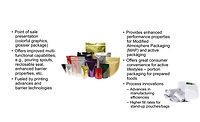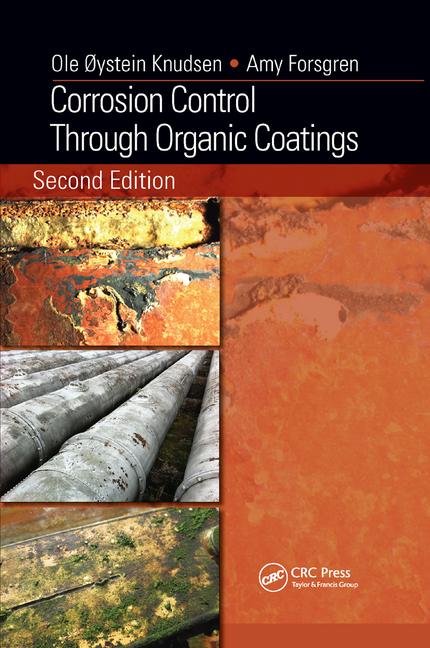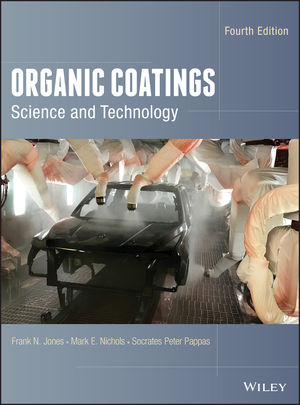Conformal Coatings for the 21st Century
Parylene coatings can provide 100% protection for any device or component.

Depending on the industry, applications exist for all types of conformal coating materials. However, one family of conformal coatings can do something that no other coating can: it can conformally encapsulate with 100% protection, regardless of the size or intricacy of the assembly, device or component (even at micron and submicron thickness levels). No bridging of openings, voids or pooling; just a uniform, microscopic coating that acts as a shield against almost anything that various environments can throw at it.

Parylene coatings are applied via a vapor deposition polymerization (VDP) process rather than a dispensing, spray, brush or dip process (see Figure 1). The parts to be coated are first placed in the deposition chamber. The powdered raw material, known as “dimer,” is placed in the vaporizer at the opposite end of the deposition system. The dimer is heated until it is sublimated directly to a vapor, and then it is heated again in order to break the dimeric vapor into a monomeric vapor. This very active monomeric vapor then moves into the ambient-temperature deposition chamber, where it spontaneously polymerizes onto all surfaces and forms the thin parylene film.
The parylene process is carried out in a closed system under a controlled vacuum. The deposition chamber remains at room temperature throughout the process. No solvents, catalysts or plasticizers are used in the coating process, so the resultant parylene coating is also devoid of these contaminants.
Because the VDP process does not include a liquid phase, the meniscus, pooling or bridging effects that often result from the application of liquid coatings are avoided and dielectric properties are not compromised. The molecular “growth” of parylene coatings not only ensures a uniform conformal coating at the thickness specified by the manufacturer, but it also penetrates into minute crevices because parylene is formed from a gas. This process ensures complete encapsulation of the substrate without the blocking of small openings.
Parylene coatings are extremely lightweight and offer excellent barrier properties without adding significant dimension or mass to delicate components. Parylene is typically applied in thicknesses ranging from 500 angstroms to 75 microns. A 25-micron coating, for example, will have a dielectric capability well in excess of 5,000 volts.
A few additional benefits of parylene coatings include the following:

Ultra-thin parylenes protect components such as circuit boards, sensors, MEMS, multi-layer packages, and light-emitting diodes (LEDs) used in a variety of applications, including hydrocarbon drilling, utility meters, audio systems, industrial monitoring systems, agricultural equipment, and high-voltage electrical connectors. Specialty Coating Systems’ (SCS) parylenes are RoHS compliant and have been shown to mitigate metallic whisker growth.
LEDs incorporate miniaturized solid-state technologies that are energy efficient and environmentally safe. Today’s LED technology can be found in a range of applications-from large video displays, outdoor illumination and transportation signage to the latest technology in smart cell phone displays.
Conformal coatings such as silicones, acrylics, urethanes and potting compounds are often not uniform in their application and thus may have voids. Such voids (coating discontinuities) provide pathways for moisture to get to the underlying circuitry and cause LED performance failures. These failures can be expensive, especially in the large number of LED boards used in immense digital displays and video signage. In addition, the weight/mass of many standard coatings is a drawback that can induce stresses in delicate components.
Parylene coatings are extremely lightweight, offering excellent barrier properties without adding significant dimension or mass to delicate components. Parylene HT coatings are also optically clear and UV stable.
Parylene conformal coatings are both biocompatible and biostable, offering the ability to provide excellent moisture, chemical, and dielectric protection (in addition to dry-film lubricity) to a host of medical devices and components. Some of these devices include stents, pacemakers, needles, catheters, electrosurgical tools, cochlear and ocular implants, elastomeric components, and the latest in ingestible devices such as micro-cameras.
SCS maintains Device and Drug Master Files with the U.S. Food and Drug Administration. These files, which include the results of ISO biological evaluations on SCS Parylenes, are available for reference by commercial coating service customers.
Vehicle management systems for emissions, lighting, fluid monitoring, power train and fuel systems increasingly comprise high-tech electronic control systems that often come in highly miniaturized, multi-layer packages. These devices and materials must be able to survive hostile automotive environments that include high temperatures, corrosive fluids and vapors, and prolonged UV exposure. For nearly 40 years, parylene has protected automotive components such as circuit boards, sensors, MEMS, LEDs and gaskets, to name a few. Parylene HT offers increased UV and thermal stability (350°C long-term) for components that must survive these harsh automotive environments.
Parylene is a MIL-SPEC-approved conformal coating that has been in use for over 40 years in military and aerospace applications. Parylene N, C and HT are listed on the QPL for MIL-I-46058 and are also recognized as meeting the requirements of IPC-CC-830. The vacuum deposition process eliminates the potential for trapped air pockets within or under the parylene coating. Such air pockets can rupture when exposed to high altitude, creating mechanisms for circuit failures. Parylene has been used to protect various military components in a variety of applications, including aircraft control systems, radar systems, armament control systems, and engine control and monitoring systems.
Parylene conformal coatings have protected devices and components used in commercial aircraft and space applications for a number of years, covering virtually everything from wiring and cabling assemblies and camera components to power supplies for various internal vehicle systems. As previously mentioned, parylene coatings also provide excellent moisture and dielectric barrier protection for electronic components, such as circuit card assemblies, PCBs for control systems, and components used in various support or controls systems-all of which need to withstand the atmospheric, thermal, and pressure changes of space flight.
In addition to protecting components from the moisture condensation that occurs with the rapid thermal and humidity shifts, parylene also restricts outgassing, does not outgas itself, and protects components from potentially high levels of vibration. Parylene actually strengthens delicate wire bonds and connections by 10x to facilitate continued connection reliability.
Parylenes do not exhibit changes in mechanical properties with changes in temperature as do many other materials. In oxygen-free atmospheres or in the vacuum of space, the continuous service temperature projections exceed 200°C for Parylenes N and C. Parylene HT has the ability to resist thermal oxidation up to 350°C (long-term) in both oxygen and oxygen-free atmospheres.
For more information, contact the author at Specialty Coating Systems, 7645 Woodland Dr., Indianapolis, IN 46278; phone (317) 244-1200; e-mail lwolgemuth@scscoatings.com; or visit www.scscoatings.com.

Depending on the industry, applications exist for all types of conformal coating materials. However, one family of conformal coatings can do something that no other coating can: it can conformally encapsulate with 100% protection, regardless of the size or intricacy of the assembly, device or component (even at micron and submicron thickness levels). No bridging of openings, voids or pooling; just a uniform, microscopic coating that acts as a shield against almost anything that various environments can throw at it.

Figure 1. Vapor Deposition Polymerization Process
Protection Plus
Parylene is the generic name for a series of polymeric organic coatings that are polycrystalline and linear in nature, have useful dielectric and barrier properties per unit thickness, and are chemically pure and inert. Parylene coatings are ultra-thin, pinhole-free and conform to components due to their molecular-level polymerization; these coatings basically “grow” onto the substrate surfaces one molecule at a time.Parylene coatings are applied via a vapor deposition polymerization (VDP) process rather than a dispensing, spray, brush or dip process (see Figure 1). The parts to be coated are first placed in the deposition chamber. The powdered raw material, known as “dimer,” is placed in the vaporizer at the opposite end of the deposition system. The dimer is heated until it is sublimated directly to a vapor, and then it is heated again in order to break the dimeric vapor into a monomeric vapor. This very active monomeric vapor then moves into the ambient-temperature deposition chamber, where it spontaneously polymerizes onto all surfaces and forms the thin parylene film.
The parylene process is carried out in a closed system under a controlled vacuum. The deposition chamber remains at room temperature throughout the process. No solvents, catalysts or plasticizers are used in the coating process, so the resultant parylene coating is also devoid of these contaminants.
Because the VDP process does not include a liquid phase, the meniscus, pooling or bridging effects that often result from the application of liquid coatings are avoided and dielectric properties are not compromised. The molecular “growth” of parylene coatings not only ensures a uniform conformal coating at the thickness specified by the manufacturer, but it also penetrates into minute crevices because parylene is formed from a gas. This process ensures complete encapsulation of the substrate without the blocking of small openings.
Parylene coatings are extremely lightweight and offer excellent barrier properties without adding significant dimension or mass to delicate components. Parylene is typically applied in thicknesses ranging from 500 angstroms to 75 microns. A 25-micron coating, for example, will have a dielectric capability well in excess of 5,000 volts.
A few additional benefits of parylene coatings include the following:
- UV Resistance. Unlike other conformal coating formulations, parylene coatings such as Parylene HT® provide excellent barrier protection without degradation in the presence of ultraviolet (UV) light.
- High Temperature Resistance. Parylene HT can consistently withstand 350°C operating temperatures and short-term exposures to 450°C.
- Dielectric Constant and Dissipation Factor. Parylene has an extremely low dielectric constant and dissipation factor, allowing it to provide small, tight packages with dielectric insulation via a thin coating. It has been demonstrated that the voltage breakdown per unit thickness increases with decreasing parylene film thickness.

Parylene-coated (top) and non-coated (bottom) boards after testing in a salt-fog environment.
Industries and Applications
Parylenes are suitable for a range of applications. The electronics industry is moving toward miniaturization with high-delivery-capacity, multi-tasking products. These products are continually demanding additional application capabilities in smaller packages. Parylene coatings provide excellent moisture, chemical and dielectric barrier protection to a variety of electronic components. It penetrates into even the smallest profiles and crevices of electronic packages for complete encapsulation.Ultra-thin parylenes protect components such as circuit boards, sensors, MEMS, multi-layer packages, and light-emitting diodes (LEDs) used in a variety of applications, including hydrocarbon drilling, utility meters, audio systems, industrial monitoring systems, agricultural equipment, and high-voltage electrical connectors. Specialty Coating Systems’ (SCS) parylenes are RoHS compliant and have been shown to mitigate metallic whisker growth.
LEDs incorporate miniaturized solid-state technologies that are energy efficient and environmentally safe. Today’s LED technology can be found in a range of applications-from large video displays, outdoor illumination and transportation signage to the latest technology in smart cell phone displays.
Conformal coatings such as silicones, acrylics, urethanes and potting compounds are often not uniform in their application and thus may have voids. Such voids (coating discontinuities) provide pathways for moisture to get to the underlying circuitry and cause LED performance failures. These failures can be expensive, especially in the large number of LED boards used in immense digital displays and video signage. In addition, the weight/mass of many standard coatings is a drawback that can induce stresses in delicate components.
Parylene coatings are extremely lightweight, offering excellent barrier properties without adding significant dimension or mass to delicate components. Parylene HT coatings are also optically clear and UV stable.
Parylene conformal coatings are both biocompatible and biostable, offering the ability to provide excellent moisture, chemical, and dielectric protection (in addition to dry-film lubricity) to a host of medical devices and components. Some of these devices include stents, pacemakers, needles, catheters, electrosurgical tools, cochlear and ocular implants, elastomeric components, and the latest in ingestible devices such as micro-cameras.
SCS maintains Device and Drug Master Files with the U.S. Food and Drug Administration. These files, which include the results of ISO biological evaluations on SCS Parylenes, are available for reference by commercial coating service customers.
Vehicle management systems for emissions, lighting, fluid monitoring, power train and fuel systems increasingly comprise high-tech electronic control systems that often come in highly miniaturized, multi-layer packages. These devices and materials must be able to survive hostile automotive environments that include high temperatures, corrosive fluids and vapors, and prolonged UV exposure. For nearly 40 years, parylene has protected automotive components such as circuit boards, sensors, MEMS, LEDs and gaskets, to name a few. Parylene HT offers increased UV and thermal stability (350°C long-term) for components that must survive these harsh automotive environments.
Parylene is a MIL-SPEC-approved conformal coating that has been in use for over 40 years in military and aerospace applications. Parylene N, C and HT are listed on the QPL for MIL-I-46058 and are also recognized as meeting the requirements of IPC-CC-830. The vacuum deposition process eliminates the potential for trapped air pockets within or under the parylene coating. Such air pockets can rupture when exposed to high altitude, creating mechanisms for circuit failures. Parylene has been used to protect various military components in a variety of applications, including aircraft control systems, radar systems, armament control systems, and engine control and monitoring systems.
Parylene conformal coatings have protected devices and components used in commercial aircraft and space applications for a number of years, covering virtually everything from wiring and cabling assemblies and camera components to power supplies for various internal vehicle systems. As previously mentioned, parylene coatings also provide excellent moisture and dielectric barrier protection for electronic components, such as circuit card assemblies, PCBs for control systems, and components used in various support or controls systems-all of which need to withstand the atmospheric, thermal, and pressure changes of space flight.
In addition to protecting components from the moisture condensation that occurs with the rapid thermal and humidity shifts, parylene also restricts outgassing, does not outgas itself, and protects components from potentially high levels of vibration. Parylene actually strengthens delicate wire bonds and connections by 10x to facilitate continued connection reliability.
Parylenes do not exhibit changes in mechanical properties with changes in temperature as do many other materials. In oxygen-free atmospheres or in the vacuum of space, the continuous service temperature projections exceed 200°C for Parylenes N and C. Parylene HT has the ability to resist thermal oxidation up to 350°C (long-term) in both oxygen and oxygen-free atmospheres.
Reliable Protection
While there is a place for many varieties of conformal coatings, not all systems, devices or components need the special benefits provided by parylene. However, when the best protection is required and components must have a long, reliable life, one of the parylene formulations will often be the answer.For more information, contact the author at Specialty Coating Systems, 7645 Woodland Dr., Indianapolis, IN 46278; phone (317) 244-1200; e-mail lwolgemuth@scscoatings.com; or visit www.scscoatings.com.
Links
Looking for a reprint of this article?
From high-res PDFs to custom plaques, order your copy today!








